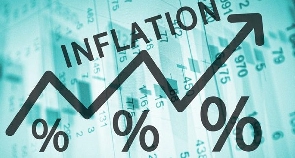 The national year-on-year inflation rate was 11.4% in July 2020
The national year-on-year inflation rate was 11.4% in July 2020
The national year-on-year inflation rate was 11.4% in July 2020, which is 0.2 percentage points higher than last month the Ghana Statistical Service (GSS) has announced.
Month-on-month inflation between June 2020 and July 2020 was 0.5%. This is lower than the 1.0% recorded between May and June, the 1.7% recorded between April and May and 3.2% between March and April 2020.
The average month-on-month inflation recorded in October 2019 to March 2020 was 0.7%. Only two of the thirteen Divisions had higher than average inflation rates; Housing, Water, Electricity and Gas (20.3%) and Food and Non-Alcoholic Beverages (13.7%).
At the regional level, the overall year-on-year inflation ranged from 4.2% in the Volta Region to 16.2% in Greater Accra. In all, but Greater Accra, Northern Region, and Volta Region, Food inflation was higher than Non-Food Inflation. Especially in the Western Region (19.8% Food inflation compared to 7.2% Non-Food inflation) and Ashanti (20.6% Food inflation and 4.3% Non-Food inflation).
These patterns are similar to those observed last month. The overall month-on-month inflation was between - 0.5% in the Western Region and 1.6% in the Upper West Region. With the exception of the Transport Division, most other Divisions saw a lower month-on-month inflation between June and July 2020 than on average between April and June 2020.
The Food and Non-Alcoholic Beverages Division recorded a year-on-year inflation rate of 13.7%. This is 0.1 percentage point lower than in June 2020 (13.8%) and 1.4 percentage points lower than May 2020 (15.1%). Within the Food Division, Vegetables (28.2%) and Fruits and Nuts (13.0% ) were the Subclasses with the highest rates of inflation.
Month-on-month inflation for Fruits and Nuts stood at 0% while Vegetables recorded a negative inflation of -1.5%. As Food contributed 53.0% to year-on-year inflation, it is still the predominant driver of year-on-year inflation, but it contributed less than the previous three months.
Month-on-month Food inflation was 0%, which is less than the overall month-on-month inflation and the average month-on-month food inflation. Year-on-year Non-food inflation came in at 9.7%, which is higher than the 9.2% measured in June 2020.
Month-on-month Non-Food inflation was 0.9%. The Division with the highest month-on-month inflation was Transport (3.9%). This increase is drive by an increase in the prices of Diesel and Petrol. These two items saw price decreases between April and June and now seem to move back towards pre-April price levels. Compared to earlier months, Transport also contributed more to year-on-year inflation (9.2%) and month-on-month inflation (74.4%), than in previous months.
The Non-Food Subclasses with the lowest inflation were Life and Accident Insurance (-13.4%), Electricity (-35.5%) and Electric Appliances for Personal Care (-66.4%).
The inflation of imported goods was 5.1%, while the inflation of local goods was 14.1% on average. Month-on-month inflation for imported goods was 1.0%, while month-on-month inflation for local goods was 0.4%. The main contributor to local inflation was the inflation of locally produced foods.
Core inflation
Core inflation is a measure of inflation designed to present a more constant statistic of price change, that is less influenced by the month-on-month sudden drops and surges of prices of certain volatile goods and services. GSS does this by eliminating volatile products such as Food Items, Energy and Utility from the index calculation. In July 2020 the core inflation was 9.3%. This is lower than both the overall inflation and Non-Food inflation. Last month the core inflation was 8.8%